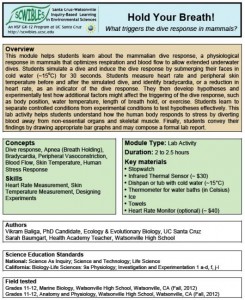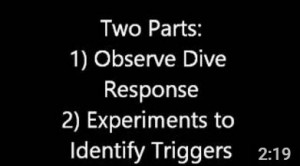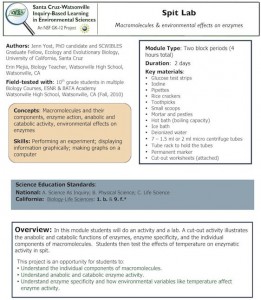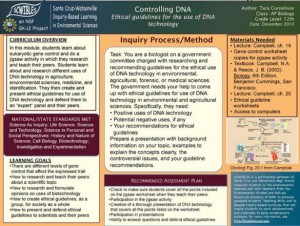 Assessing Biodiversity Using a School Garden
Assessing Biodiversity Using a School Garden
by Jenn Yost, Carla Fresquez and Bill Callahan
One way that we can protect biodiversity is by restoring degraded habitats to more natural conditions. This process can be simulated at a school through the restoration of a degraded plot of land into local native plant communities. Planting a native garden is a way to expose students to local biodiversity, teach them the importance of biodiversity, and mimic what can be done on a large scale to restore ecosystems once they are degraded.
Students 1) develop their own methods to quantify biodiversity, 2) measure biodiversity in a native garden, and 3) gain first hand experience in native plant gardens, restoration, and human impacts on environments.
Docs: fulltext.docx lecture1.pdf lecture2.pptx handout.docx datasetExs.xlsx graphs.docx
Keywords: argument, biodiversity, cause, data, HS-ESS3.A, HS-ESS3.C, explanations, garden, investigations, HS-LS1.A, HS-LS2.A, HS-LS2.C, HS-LS4.A, HS-LS4.D, models, native plants, patterns, questions, restoration, systems

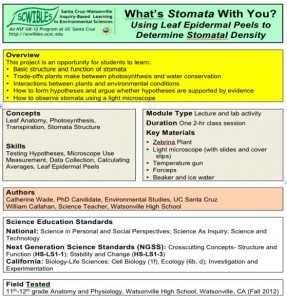 Using Leaf Epidermal Peels to Determine Stomatal Density
Using Leaf Epidermal Peels to Determine Stomatal Density

